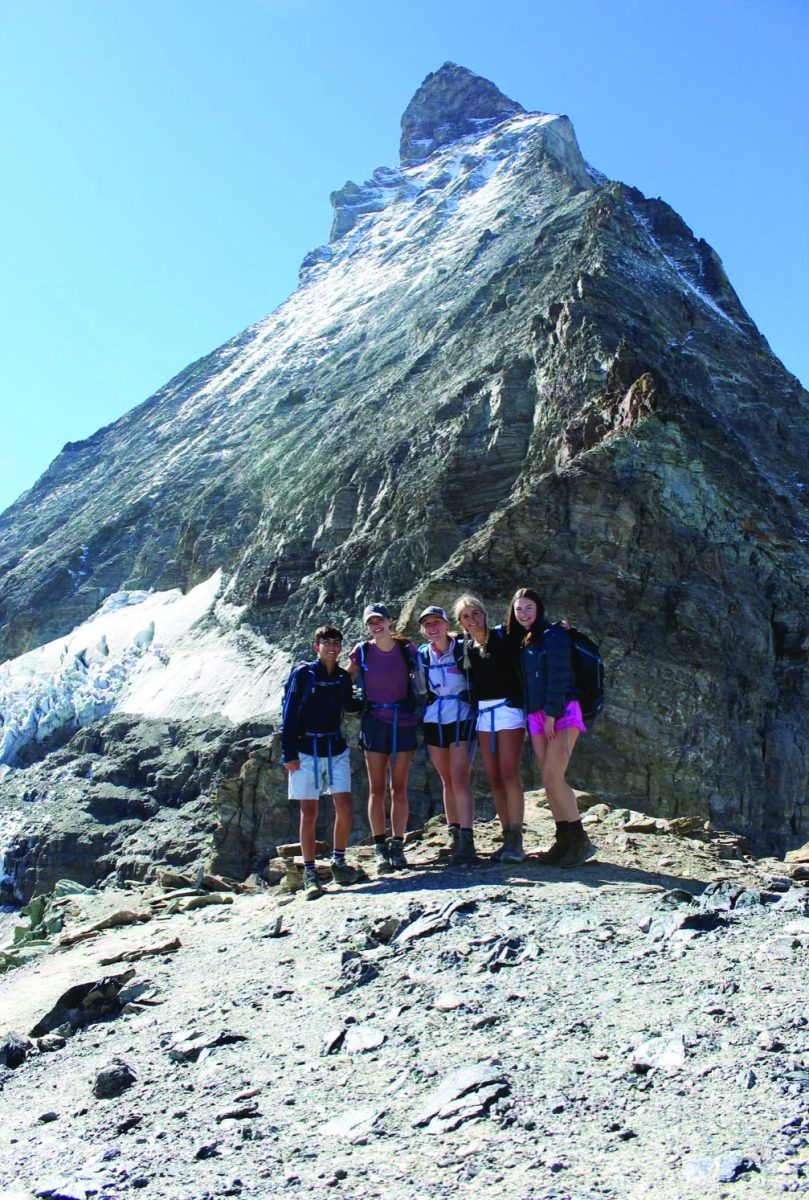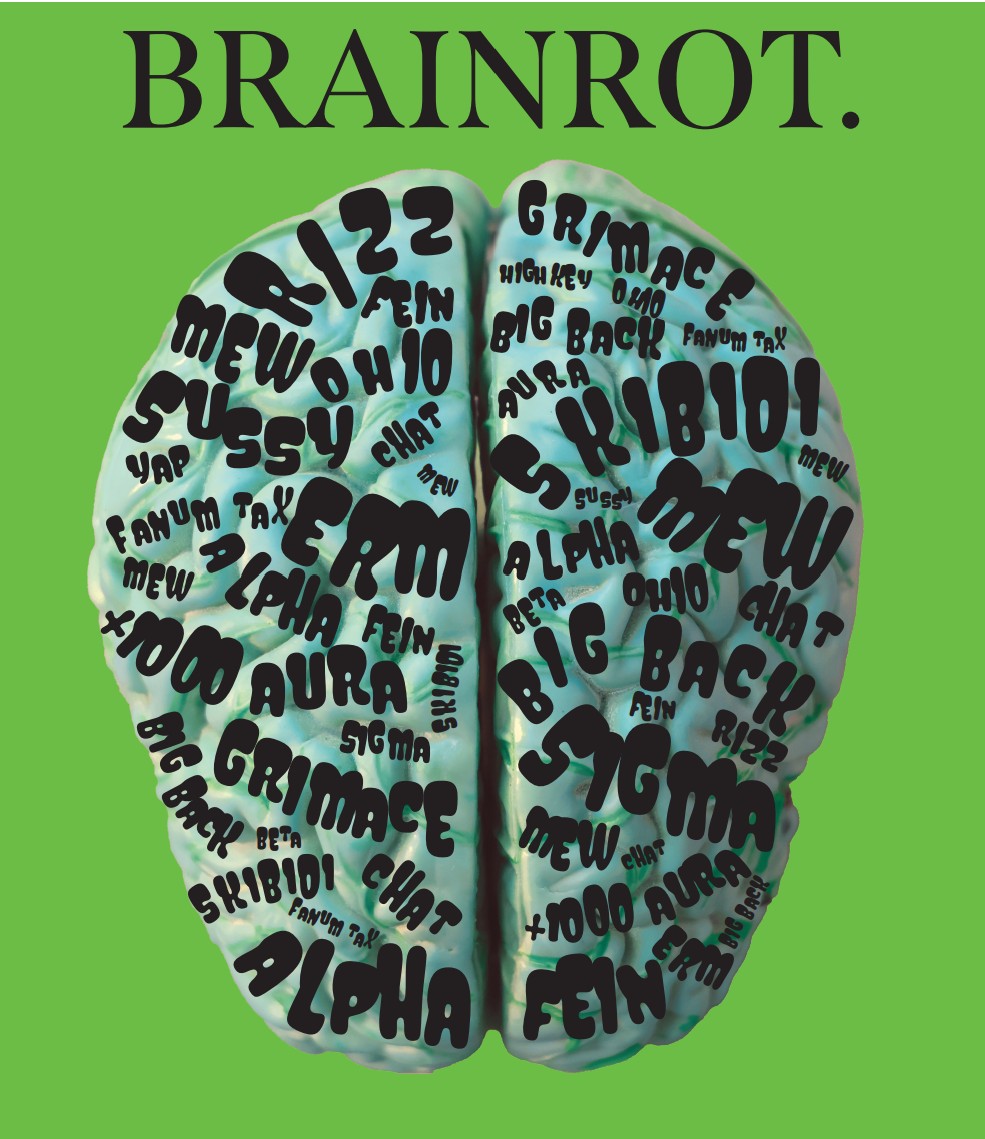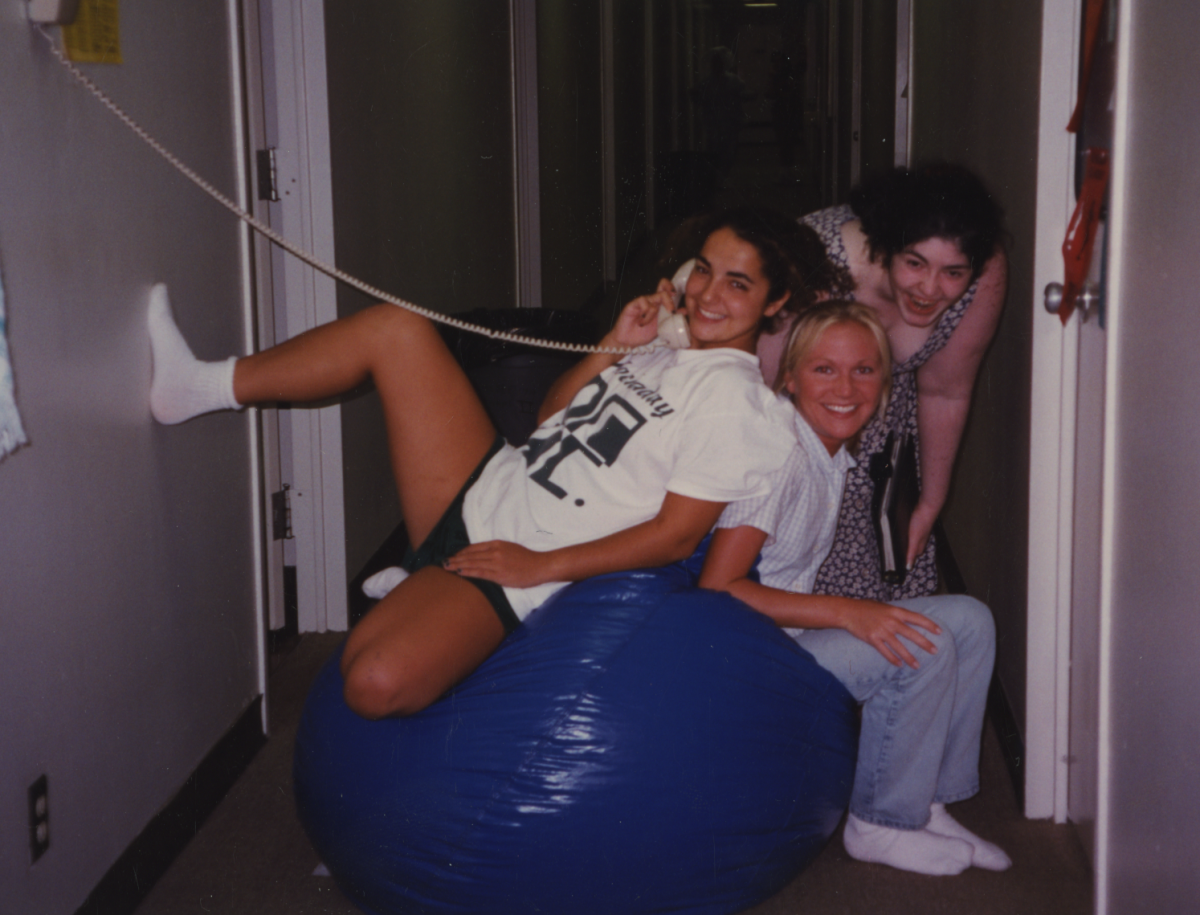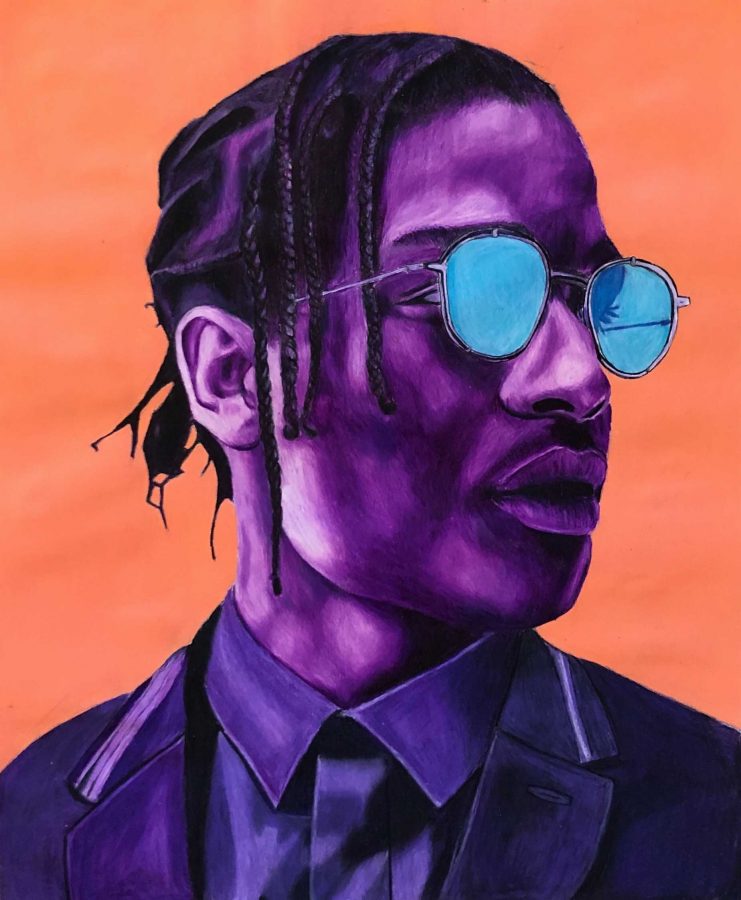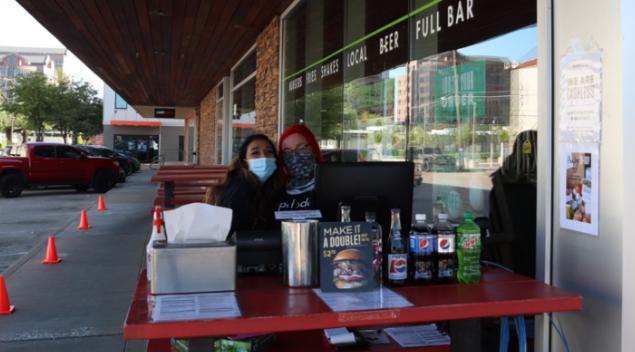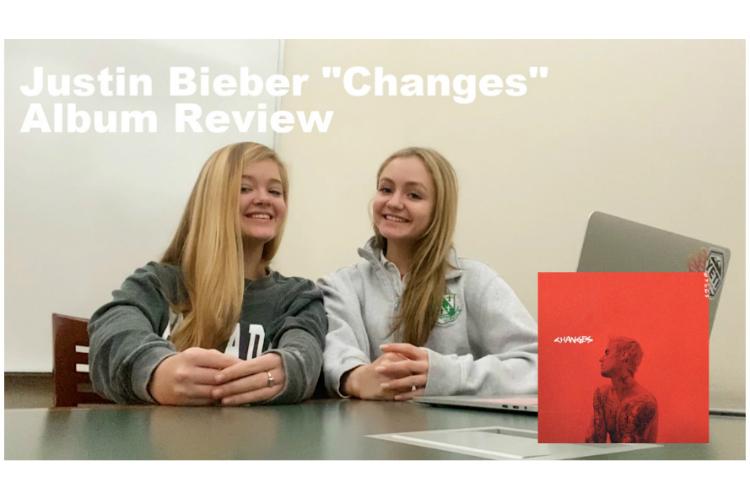//PICTURED ABOVE:
1. Dallas protestors march and hold signs in front of the Jack Evans Police Department Headquarters.
2. Protestors kneel on the ground outside of Dallas City Hall to condemn the killing of George Floyd and support the Black Lives Matter movement.
3. Protestor(s) spray painted the message ‘USA built on lies’ on a wall in Downtown Dallas.
4. Dallas protestors stand and kneel in front of a boarded-up window near Neiman Marcus on Main Street with the phrase ‘Now you see us.’
5. A protestor marches in Downtown Dallas with a sign that portrays Derek Chauvin as a pig.
In the midst of the current demonstrations sparked by the killing of George Floyd, several Hockaday students and alumnae have attended protests in Dallas and other states. Within a week of the release of video footage of George Floyd’s murder, protests occurred in all 50 states and gained the support of people throughout the country. In Dallas, protests began on May 29 in downtown Dallas at the Jack Evans Dallas Police Department Headquarters and continued for several weeks. Each Hockaday student and alumna who has attended protests has a unique perspective. While some students and alumnae have chosen to attend protests, others have shown support for the Black Lives Matter movement in different ways. Following are five outlooks from Hockaday students and alumnae about their experiences at the protests.
Jules Johnson ’22
Rising junior Jules Johnson attended a Frisco protest on June 1 in support of the Black Lives Matter movement. She recalled two occasions in which someone drove by yelling at protestors in opposition of the movement. The first time, someone stopped and tried to initiate violence. However, Johnson said that she does not point to this hatred as the most memorable part of the protest. Instead, she commends the way the demonstrators were able to come together and combat this opposition.
“It was not the hate that was memorable, but seeing people come together to defend each other,” Johnson said. “Because it was a non-violent protest, a few protesters blocked the individuals from hurting anyone while the protest continued. It was touching to know how many people actually cared about black lives, especially in a predominantly white community that could have turned a blind eye.”
Johnson said she chose to take part in a nonviolent protest for several reasons. Firstly, nonviolent protesting allows her to support something important to her and bring awareness to the movement. In addition, Johnson has observed that in violent protests, the motivation for protesting can be skewed, and she also noted that as a black individual, she could be targeted. But Johnson still understands why many people have chosen to protest violently.
“Many people think that violent protests are justified because of [their] effectiveness,” Johnson said. “In terms of the George Floyd case, violent protests have led to the fastest time in which an officer was convicted of brutality against a black civilian. I believe people are tired of nonviolent protests because they have been practiced for years and not much has changed.”
Furthermore, Johnson said the most effective way for Hockaday students to help the movement and get involved is to educate themselves. Although Johnson is in support of donating money and signing a petition, she said you first have to understand the gravity of the movement. Johnson said Hockaday students are fortunate to have access to many different resources that will teach them about black history, noting the successes of the black community are not taught in many schools.
“In fact, as a black individual, I wasn’t aware of these events until my parents took the time to educate me,” Johnson said. “Take this time to educate yourself on the historical context and things you do now that are offensive. Topics like white privilege and microaggressions are sensitive, but it is better to address it instead continuing to let the repercussions of injustice remain.”
At first, when Johnson was going to be featured in this article she wanted to remain anonymous. She said she did not want to attach her name to words until she was fully educated on the movement and current events. Additionally, she was afraid of receiving backlash or being viewed differently for what she had to say. However, right before her interview, Johnson decided she wanted to be identified in this article because of the importance of standing up for herself.
“Something this movement has taught me is that it is important to stand up for yourself and call it out when you see injustice,” Johnson said. “Whether you are educated or not, every person should know right from wrong. And in response to how I would like to be described, I am a proud young black woman.”
Alyssa Taylor ’21
Although rising senior Alyssa Taylor has not attended a protest yet, she plans to go to one with her family. But that has not stopped Taylor from sharing her perspective and speaking about recent protests on social media platforms such as Instagram and Snapchat. Taylor supports nonviolent protesting because she believes it is a safer and more efficient way of bringing about change to society. Although she still empathizes and understands why people are violently protesting, she feels like participating in violent demonstrations that destroy property is not a good way to convey the black community’s feelings.
“Although I understand the hurt and anger people are feeling, destroying our own communities isn’t the way to express that,” Taylor said. “In the end that just hurts the same people we are advocating for.”
Taylor said her concern with violent protest is that some people at the riots are not there for the cause and solely want to evoke chaos. She said these people want to participate in the destruction without actually caring about the Black Lives Matter movement or its message. Because of this, Taylor ultimately supports nonviolent protesting because it better represents the essence of the Black Lives Matter movement.
“I believe that peaceful protests are the best way to spread awareness about police brutality, spread the message of the Black Lives Matter movement, and to create a better society,” Taylor said.
In response to police brutality, Taylor said she supports police reform. She notes that police violence is a complex problem that requires a series of reforms, and she recognizes accountability as one the most important reforms in this sequence.
“Too many times police officers have committed horrific acts of violence without fear of repercussions,” Taylor said. “Review boards can stop officers and hold them accountable after their first offense instead of their 18th. Specific policies about force that clearly establishes what is ‘excessive’ will also help to hold police officers accountable. It would establish much needed guidelines rather than vague terms that allow for debate.”
Taylor said the best way for students, especially non-black students, to support the black community at Hockaday is to educate themselves. Although she loves seeing the outpouring of support, it means nothing if people treat the Black Lives Matter movement as a trend.
“People should read articles on topics such as being anti-racist, allyship and privilege,” Taylor said. “Students should also sign petitions and donate to organizations that support the Black Lives Matter movement.”
Taylor wants to encourage people to engage in difficult conversations at home and with their friends. She said talking about race can be an uncomfortable subject, but it is the best way to foster personal growth.
“If you don’t understand what’s going on or why so many people feel the way they do, try reaching out to one of your black friends and ask them about how they feel,” Taylor said. “I know I’ve had some very constructive conversations with people who just wanted to understand. So be open to change and be open to growth.”
Cheryl Hao ’18
Cheryl Hao ’18 attended a protest hosted by Austin Justice Coalition, 10,000 Fearless Austin and Black Lives Matter Austin on May 31 in Austin. The demonstration started at the Texas Capitol building at 1 p.m. and continued south to the Colorado River. Hao said the protest remained peaceful until police began to barricade demonstrators’ path to prevent them from continuing. At that point, the protest escalated, but eventually, the police allowed her and the other demonstrators to continue and finish the march.
However, Hao said the majority of the violence she observed at the Austin protest was led by non-black people. The black protestors were on the front lines directly in front of the police and the crowds of non-black people behind them started throwing items at the police.
“Then the black [demonstrators] would have to turn around and say ‘Stop throwing things. We’re here in the front lines and we would be the ones punished for you throwing things,’” Hao said. “So, I think there is a lot of that dichotomy [because] there are a lot of white people who want to be allies but aren’t quite there yet… But, in the media [white people] aren’t the ones being called ‘thugs.’”
Hao said she is not in favor of reforming the police system but instead abolishing it. She said because the police forces were originally slave patrols and adapted since, they are actually functioning as they were designed, and there is not much to reform when the system was always broken. This leads Hao to support the alternate plan, abolition.
“Throughout college I’ve been learning about what is called abolition, and I’m in full support of that,” Hao said. “[It’s] where people are trying to set forth a world where police and prisons don’t need to exist.”
Hao wanted to let the community know that she is Asian and of Chinese descent and not black, and she believes that her stance on different types of protesting doesn’t matter because of that. But she supports and will defend any type of protesting.
“I do support any kind of protesting that’s happening right now,” Hao said. “I think a lot of people are thinking if [they] go out and destroy what the decision-makers think are the most valuable things, which is property and capital, then they will pay attention.”
Hao said it is important during this time for non-black people to step back and reflect on how to be an ally and how to stop contributing to a racist system. She said she hopes non-black people take the time to listen and educate themselves.
“Step one is to self-reflect and realize how you contribute and how your family contributes to the suffering of black people,” Hao said. “Also, just listening to your black friends, amplifying their voices and not depending on them as an educational resource. I think it’s important for white people and non-black people to self-educate and take those steps.
Anden Suarez ’18
Anden Suarez ’18 attended the protest at the Margaret Hunt Hill Bridge, where police confronted and detained hundreds of protestors around 8:45 p.m. From Suarez’s view, the demonstrators were marching peacefully onto the bridge when they were met with city, state and federal police who fired smoke bombs into the crowd.
“It was pure panic,” Suarez said. “There was no intention to be anything other than peaceful.”
The protest was spearheaded by Next Generation Action Network, a social action and advocacy organization. It was originally planned to be at the Dallas Police Department’s headquarters but was later moved to the Dallas County Frank Crowley Courthouse, which was located outside of the area under curfew. There, protestors gave speeches and began the march. Suarez said as they marched onto the ramp, police had lined up along the sides and allowed protestors onto the bridge.
“I was not told by police not to [get on the bridge],” Suarez said. “To me, or my face, there was no public announcement, no megaphone announcement.”
When the protestors first crossed the bridge and met the line of police officers, they kneeled with their hands up. The police then released smoke grenades and ordered the crowd to lie on the ground with their hands behind their backs.
“We were terrified,” Suarez said. “We had been very intentional about not breaking the law. People that had joined the march were operating under the assumption that they were only and exclusively expressing their First Amendment right of assembly.”
The police then worked from both ends of the crowd to zip-tie, process, and shuttle the demonstrators off of the bridge. However, it wasn’t clear whether the protestors would be given tickets.
“Nobody knew what we were being arrested for,” Suarez said. “Nobody was reading their Miranda rights in any public or audible manner that I heard.”
Suarez was one of the last few dozen people to be released and left the courthouse around 1 a.m. When she was released, Suarez learned that the protestors would be mailed citations for impeding traffic. Dallas Police Chief Renée Hall has since announced that the 674 protestors will no longer be charged and defended her decision to detain the protestors.
“We will continue to support a peaceful protest,” Hall said in a statement to The Dallas Morning News. “We had to protect the protesters from vehicular injury on a roadway still open to traffic. It was critically important to process protesters and then safely reopen the bridge.”
Although Suarez said the protestors had been treated unfairly, she said the purpose of her story is to protest the victimization of the black community.
“The biggest point is that black communities are being terrorized and brutalized by the police, and that’s what I was there to protest,” Suarez said. “I just so happened to be treated unfairly, but I still probably had one of the fairest experiences because I am white.”
Aryn Thomas ’18
Although Aryn Thomas ’18 has not been able to attend a protest, she stands in full support of all who are able to fight against “the injustices that plague the black community in regards to both the criminal justice system and police brutality.” While Thomas said protesting is an effective way of invoking change, she said spreading accurate, raw and uncut information is the most effective way.
“Bringing awareness to and exposing the injustice provide the fuel for the protestors and give the movement renewed focus,” Thomas said. “We must continue to use the biggest resources we have, the media, to organize and fight back against racism.”
Additionally, Thomas supports the Black Lives Matter movement which calls for the defunding of police and investment into black communities, so that black lives can be equipped with resources to strive towards greatness.
“I support the movement and their demands; I think it is important that we take the time to educate ourselves about the pros and cons of taking these actions,” Thomas said. “There is no longer room for corruption and deep-seeded racism to live and manifest itself as protection for citizens.”
For Thomas, it is important that people educate themselves and consider the perspectives of others. She emphasized it is well beyond time to take a stance against oppression in America and supports any and all resistance.
“The people are tired of these injustices,” Thomas said. “It is our job as soldiers against racism to support them, and people who are not fighting the same fight or not experiencing the injustices in the same way have no room to dictate how victims of racism and police brutality mount their response. Black lives mattered yesterday. Black lives matter today. And black lives matter tomorrow.”
Story by Erin Parolisi, Web Editor, Kelsey Chen, JADE Editor, and Lea Whitley, Video Editor
Photos by Lauren Roach







